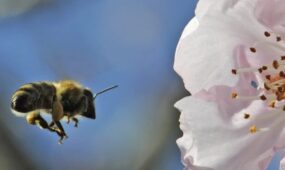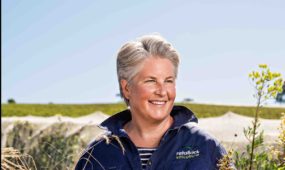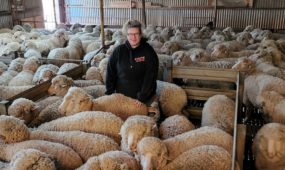Gulf model to manage marine ecosystems
Primary Industries
MODELLING is helping to identify the competing interests and impacts of different industries in the Spencer Gulf.

Sign up to receive notifications about new stories in this category.
Thank you for subscribing to story notifications.
South Australia's Spencer Gulf is a crowded environment when it comes to marine and human interactions. It harbours productive fishing and aquaculture sectors, along with coastal tourism, ports and shipping, defence operations and mining interests. Alongside these activities are conservation areas and a range of iconic species.
These myriad activities makes the gulf an ideal location to study how changes in one area of operation can affect other parts of the marine ecosystem.
Since 2012, several South Australian research teams have been working collaboratively to develop modelling systems that are capable of investigating the complex interactions of human and marine life involved. With the projected development of new ports and mining, understanding the effects of these activities might help to solve problems before they manifest and establish new means of managing competing interests in complex systems.
Bronwyn Gillanders is the principal investigator on the Spencer Gulf Ecosystem Development Initiative (SGEDI), which is developing models to understand the Spencer Gulf.
The SGEDI has been funded by a diverse group of partners and is supported with nearly $2.5 million of investment from industry. Investors include BHP Billiton, Santos, Arrium, Alinta, Nyrstar, Centrex Metals, Flinders Ports and the FRDC. Research partners include the University of Adelaide, the South Australian Research and Development Institute (SARDI) and Flinders University.
“There is lots going on besides just fishing and aquaculture. Other activities relate to shipping for example,” Bronwyn Gillanders says.
The gulf is also home to a range of iconic species, as well as marine parks. The research has looked at interactions among activities and their potential cumulative effects.
The project has looked at a range of potential changes in the Spencer Gulf – from the effects of shipping activity and increases in mining, to the potential impact of increased sardine fishing on other marine species in the gulf.
The FRDC's contribution to understanding the Spencer Gulf, alongside the larger SGEDI project, has focused primarily on developing models that can be used to assess how changes to fishing and aquaculture might influence components of the ecosystem.
The modelling addressed three potential 'what-if' scenarios around increases in finfish aquaculture, Australian Sardine catch and Western King Prawn effort and catch.
SARDI's Simon Goldsworthy led the application of the Ecopath with Ecosim (EwE) modelling framework that was initially developed at Canada's University of British Columbia but is now used around the world. Simon Goldsworthy says the EwE modelling framework provides an opportunity to bring together information provided by a diverse group of oceanographers, marine biologists and quantitative ecologists.
The Spencer Gulf is known as a key production hub for both high-quality and high-value seafood. A clean, environmentally friendly image is a valuable asset to the seafood producers that operate there.
Gillanders says being informed about the potential impact of other industries on the marine environment is an important part of the seafood sector's reputation, as well as operational management.
The models measure the effects of changing food web dynamics in a system that incorporates information on currents, nutrients and the distribution of habitats such as seagrass. The project coupled several different models to assess how fishing and aquaculture can interact with each other and affect broader ecosystem structure and function. It illustrates the value of an approach that combines several different models, thus approaching some of the actual complexity that is present in the Spencer Gulf itself, making it an accurate and useful tool for managing the health of fisheries there.
Eighty per cent of South Australia's aquaculture production comes from the Spencer Gulf.
SARDI oceanographer John Middleton led the development of models to examine potential development scenarios involving both increasing and reducing nutrients from aquaculture into the system. Significant changes in biological response were found in relation to changing nutrient conditions. Model scenarios suggest that increased nutrient loading from aquaculture will result in increased levels of phytoplankton, detritus and gelatinous zooplankton (sea jellies, salps and dolioles).
The South Australia Sardine Fishery in the Spencer Gulf is the largest Australian fishery by weight with much of it used for aquaculture in the gulf.
When researchers modelled increased catches of Australian Sardines they found that animals that predate upon this species would not be greatly affected because they also prey on a wide range of other species. Increased catches of Australian Sardines appear to benefit squid, anchovies and Blue Mackerel with accompanying benefits to the prey of these species that offset the reductions in abundance of Australian Sardines.
Goldsworthy says it is likely that the increases in the abundance of other prey species was due to decreased competition from Australian Sardines.
The Spencer Gulf Western King Prawn Fishery is certified as sustainable by the Marine Stewardship Council.
Goldsworthy simulated several different scenarios to understand the impact of increased prawn fishing in the gulf. Unlike Australian Sardines, modelling for increased catches of Western King Prawns showed that the most affected species are those that eat Western King Prawns. Researchers developed a model that takes into account the bycatch at levels of fishing above historical levels. In this case the model suggested that increased fishing would affect a range of species of fish, marine birds, seals and sharks.
Goldsworthy says this model provided a good tool to explore and understand what happens when there are changes in management practices or fishing methods.
John Middleton, from the oceanographic team at SARDI that has worked on the modelling, says that biophysical studies made by his team have provided a management tool for ecosystem carrying capacity. He says this allows government managers to assess the impact of existing and proposed expansions of aquaculture.
The extension of this tool to incorporate other aspects of the ecosystem studies will help inform integrated marine management – a means of dealing with competing and conflicting interests.
The ultimate aim of this research is to provide resource managers and stakeholders with independent and credible information about the likely effects of different management options.
Goldworthy says the work has provided a base model that could be used as a tool to manage the Spencer Gulf in the future.
“We are now in a position where we can further develop the model and use it as a tool to provide possible outcomes of different management scenarios, providing capacity to improve future management of marine natural resources in the Spencer Gulf in an ecosystem-based management framework,” he says.
SARDI's Tim Ward says that an international workshop held at SARDI in 2015 looked at the practical steps towards integrated marine management and identified what has and has not worked internationally.
He says there is potential for the Spencer Gulf to be used, once the research is completed, as a case study for other multiple-use systems in Australia and around the world.
Simon Clark of the Spencer Gulf and West Coast Prawn Fisherman's Association sees integrated marine management as a long-term goal for the gulf. He says while the models do not yet give his industry much information, it is a starting point and he is positive about how this research could provide a foundation for a more integrated management system.
“If we can improve our baseline understanding of how the system operates, all sectors can work within that system harmoniously,” Clark says.
Clark says that, for the Spencer Gulf and West Coast Prawn Fisherman's Association, improving visibility as a user of the system goes a long way to setting up relationships to work towards those integrated management goals.
While research is underway to support this future management style, he says the first hurdle will be for government to adopt such a system.
Bronwyn Gillanders is positive about the application of the research.
“Eventually, this research could be used to create a web-based decision-making tool that will allow industry stakeholders, policymakers and members of the public to better understand the processes going on in the Spencer Gulf,” she says.
From FISH, the magazine of the Fisheries Research and Development Corporation
Jump to next article



